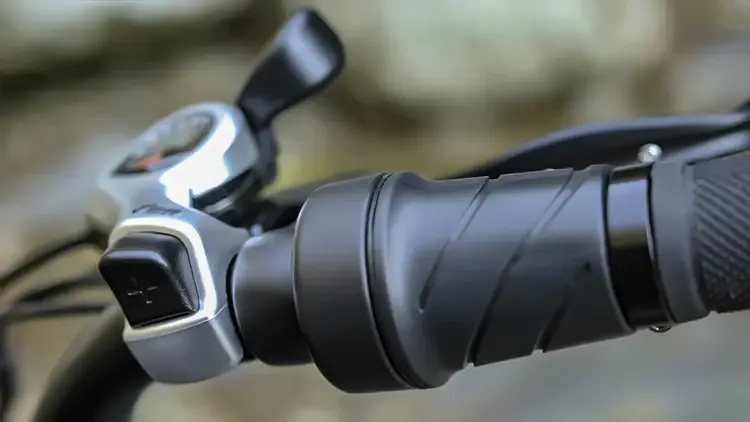Rain on the forecast, hills on the route, traffic lights every other block, this is where an Ebike Full Twist Waterproof Throttle changes the day. In 2025, waterproof full twist throttles aren’t just an add‑on: they’re a control upgrade that gives riders instant, precise power without a single pedal stroke. That means smooth hill starts, stress‑free maneuvering in tight spaces, and far less fatigue on long rides or stop‑and‑go commutes. With sealed designs that shrug off weather and road grime, today’s throttles deliver reliability to match their convenience. This article breaks down how they work, who benefits most, why waterproofing matters, and the trends shaping how throttles and pedal assist play together this year.
The function of full twist throttles in eBike design
A full twist throttle lets a rider command motor power directly by rotating the grip, no pedaling required. Think of it as the eBike’s “right-now” control: twist a little for a gentle nudge, twist more for brisk acceleration.
How it works
Most eBike full twist throttles rely on a hall‑effect sensor that reads grip rotation and sends a clean, proportional signal to the controller. The controller then meters motor current accordingly. Because the input is analog (or high‑resolution digital), it’s easy to feather power at low speeds, handy for technical paths, loading docks, or creeping through crowded bike lanes.
Why full twist vs. thumb?
- Stability: A full twist grip lets the wrist do the work, keeping hands more relaxed on rough pavement or gravel.
- Fine control: There’s a longer “throw” than many thumb throttles, which improves low‑speed modulation and smooth takeoffs.
- Familiarity: Riders coming from motorcycles or scooters instinctively know what to do.
Safety and integration
Modern eBike controllers feature ramp rates, current limits, and safety cutoffs to prevent sudden surges if the throttle is bumped. Brake levers usually include cutoff switches, instantly disabling throttle input when braking.
By 2025, many systems integrate throttle control with pedal-assist logic—some allow throttle override at any time, while others enable it only when pedaling to meet local eBike regulations.
Either way, the full twist throttle remains vital: an on-demand power control that complements pedal assist rather than replacing it.
For more insights into eBike throttle design, integration options, and rider safety, See details.
Advantages for riders with mobility or endurance concerns
For riders who struggle with joint pain, variable stamina, or balance at low speed, a waterproof full twist throttle can be the difference between riding and not riding at all.
Low‑stress starts and hill launches
Starting from a dead stop is where knees protest and balance gets shaky. A gentle twist delivers immediate torque so the bike rolls steadily before the first pedal stroke. On hills, it prevents the wobbly half‑turns that make steep intersections nerve‑wracking.
Energy management on long rides
Fatigue rarely arrives all at once: it sneaks up at mile 12, or at the twelfth traffic light. With an Ebike Full Twist Waterproof Throttle, riders can “spot assist” exactly when they need it, nudging up a rise, bridging a gap, or clearing an intersection, without committing to a higher assist level for the entire ride.
Accessibility and comfort
- Pain reduction: Those managing knee, hip, or ankle issues can minimize strain by using the throttle to get up to speed, then settling into a gentle cadence.
- Stability: Micro‑adjusting power with the wrist helps maintain balance when maneuvering cargo bikes or child seats at walking speeds.
- Predictability: Fine throttle control reduces awkward lurches that might aggravate injuries or reduce confidence.
Everyday convenience
Couriers, parents, and riders towing trailers all benefit from fast, controlled launches in traffic. Full twist throttles also make tight U‑turns, parking garage ramps, and loading elevators less of a workout. When combined with walk‑assist, they help move heavy bikes safely in crowded areas without constant pedaling.
Durability improvements through waterproof construction
“Waterproof” used to be marketing fluff. In 2025, it’s engineering, and riders can tell. A true waterproof full twist throttle is built to handle rainstorms, road spray, and daily wear without sticky inputs or electrical gremlins.
What waterproof actually means
Look for IP ratings. IP65 protects against powerful water jets: IP67 adds short‑term submersion (typically up to 1 meter for 30 minutes). For most eBike use, IP65–IP67 throttles offer excellent real‑world protection from storms, puddles, and wash‑downs. Dust resistance (the first digit) matters too: grit is often what kills rotating parts.
Inside the hardware
- Sealed sensor chamber: Hall‑effect sensors and magnets are isolated behind gaskets or O‑rings to prevent moisture intrusion.
- Conformal coating or potting on the PCB: Protects electronics from condensation and vibration.
- Corrosion‑resistant connectors: Locking, keyed plugs (e.g., Higo/Julet‑style) with molded boots keep water out of the pins and maintain signal integrity.
- UV‑stable materials and reinforced strain relief: The grip rubber resists cracking, and the cable won’t wick water into the housing.
Why it matters for control and safety
A throttle that gets gritty or spongy undermines confidence. Waterproof designs keep rotation smooth and predictable, even after months of wet commutes. Electrically, sealed housings prevent intermittent signals that could cause cutouts or surges. The result is consistent modulation, exactly what riders want when threading through traffic in the rain.
Real‑world durability cues
- Smooth return spring action after a downpour
- No moisture under the grip or at the connector after a wash
- Stable operation across temperature swings (roughly −10°C to 60°C is common)
For anyone choosing an Ebike Full Twist Waterproof Throttle, the takeaway is simple: protection isn’t just about surviving a storm, it’s about preserving precise control season after season.
Balancing throttle use with pedal assist systems
Throttle and pedal assist aren’t rivals: they’re a smart tag team. In 2025, controllers do a better job of blending the two so riders get efficiency when pedaling and instant torque when they need it.
Use cases that make sense
- Start assist: Use the throttle for the first bike length, then let torque or cadence‑based PAS take over.
- Precision at low speed: Feather the throttle for tight turns, boardwalks, or shared paths where small power changes help with balance.
- Short boosts: Tap the throttle to bridge gaps in traffic or crest short hills without bumping the assist level.
Battery and drivetrain considerations
Heavy throttle use draws higher peak current. Two simple habits improve range and component life: roll on the throttle smoothly instead of “whacking” it wide open, and combine light pedaling once moving to reduce load. Most modern controllers allow setting throttle current limits and ramp rates to encourage smooth inputs.
Controller settings to know
- Throttle only when pedaling: Required in some regions: it keeps the feature legal while retaining start assist.
- Speed‑limited throttle: Caps throttle speed (e.g., 20 mph/32 km/h for U.S. Class 2) even if PAS can go faster.
- Throttle curve: Maps rotation to output power: a softer initial curve makes parking‑lot maneuvers easier.
As always, riders should check local regulations. In many U.S. jurisdictions, Class 2 eBikes permit throttle up to 20 mph, while some Class 3 areas restrict throttles. In much of the EU, throttles beyond walk‑assist speeds change the vehicle’s classification. The good news: modern systems make it easy to configure behavior to stay compliant.

